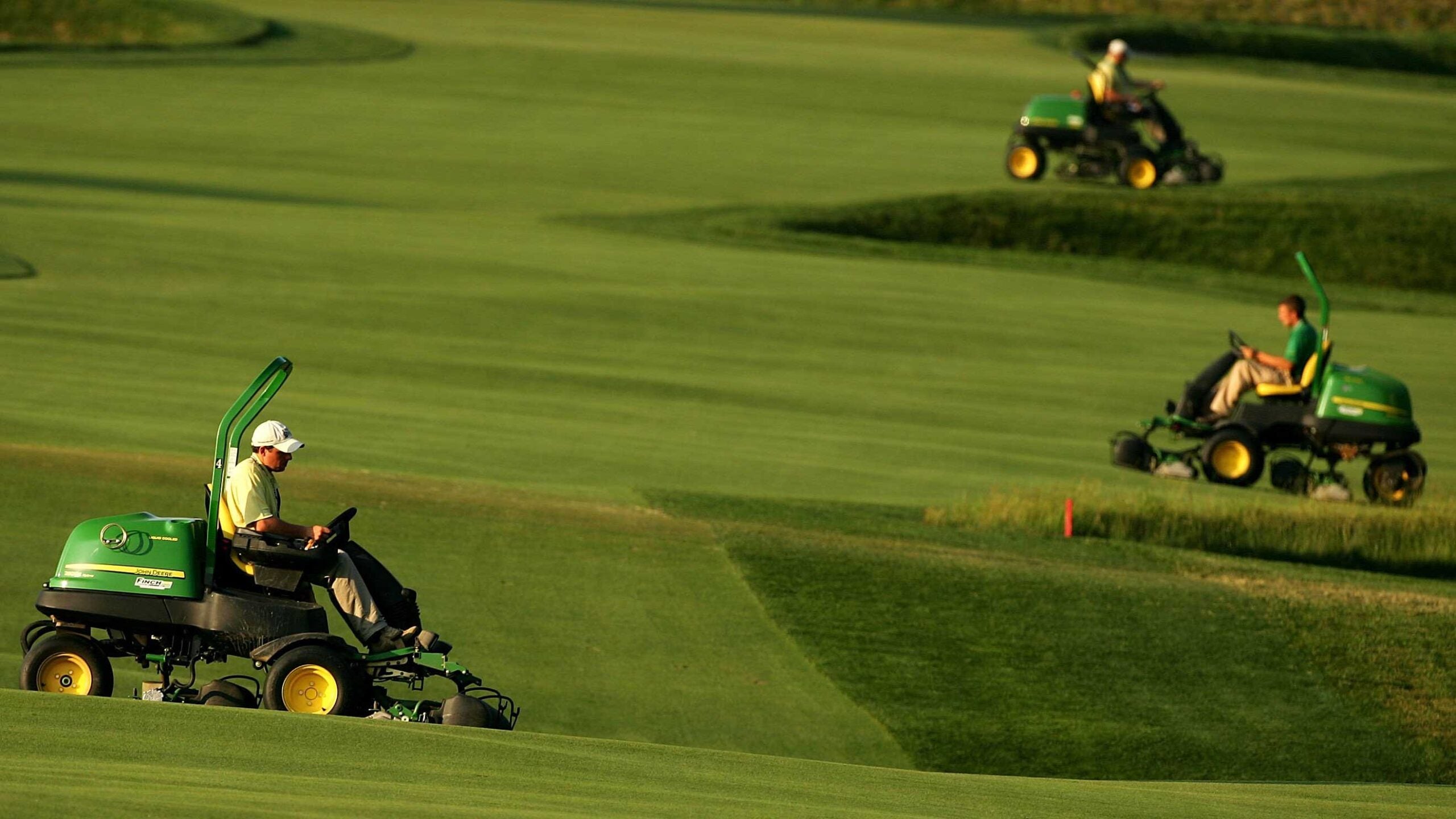Welome to Super Secrets, where we pick the brains of the game’s leading superintendents. By illuminating how course maintenance crews ply their trades, we’re hopeful we can not only give you a deeper appreciation for the important, innovative work they do but also provide you with maintenance tips that you can apply to your own little patch of paradise. Happy gardening!
***
Looks aren’t everything.
But they do mean a lot to golf course superintendents, who take great pains to beautify their grounds, tending to all sorts of nitty-gritty details that many golfers take for granted.
As the superintendent at Desert Canyon Golf Club, in Phoenix, and co-host of From the Jingweeds, a podcast dedicated to the turf-care trade, Matt Guilfoil is well acquainted with the hard work that goes into keeping up appearances.
He supplied us with a list of 5 sneaky maintenance jobs that would likely go unnoticed unless they weren’t done.
1. Cleaning sprinkler heads
Ever try to read the yardage on a sprinkler head only to see that it’s overgrown with grass? That means the grounds crew is behind on its edging, the regular practice of trimming shaggy turf from where it shouldn’t be (edging cart paths is another routine practice).
That’s not all, though. The yardage plates themselves sometimes get caked in dirt or grass stains or fertilizer residue, making them illegible. They require cleaning. Guilfoil says some supers do this job with a toothbrush, which sounds like a hassle. Though maybe not as big a headache as flossing twice a day.
2. Patterned fairway mowing
Like barbers snipping hair in different styles, supers mow their fairways in different patterns, from checkerboards and stripes to half-and-half configurations, with a line down the center and the grass on either side a different shade of green. Exactly how they do this is a subject worthy of a separate column. But there’s skill involved. Properly conducted patterned mowing is pretty, and can highlight the design features of a golf course. When the job gets botched, though, the result can be as bad as a $5 haircut.
3. Painting cups
This is a job that puts the “pain” in painting, which is why you rarely see it outside of high-end clubs. Never mind the paint itself, which gets costly (around $200 for a 12-can case, Guilfoil says). You also need a special spray nozzle that works upside down. It’s labor-intensive work that requires precision; you’re trying to paint the dirt just above the cup liner, without over-spraying onto the green or letting paint drip into the bottom of the cup.
Almost invariably, Guilfoil says, “you run out of aerosol,” leaving paint to waste at the bottom of the can. And the next day, or the day after, when you cut a new cup, you have to start painting all over again.
For all of those reasons, Guilfoil doesn’t paint his cups at Desert Canyon, and he wouldn’t want to start. “For all the time and money it takes, I don’t think it’s worth it,” he says. “And once you do it the first time, your golfers are going to expect it every time they play.”
4. Chasing off intruders
Not all birdies on the course are good. Some peck at greens in their search for grubs. Others carpet-bomb the grounds with their droppings. At Desert Canyon, a single flock of geese wings in every year, like clockwork, and Guilfoil shoos them off the same way every time: by driving at them, full speed, in a cart. Many superintendents keep dogs as sidekicks, and most of them are low-cost labor, though there are pricey canines that are bred specially for bird-chasing duty. They can fetch upward of $6,000.
5. Other paint jobs
Don’t even get Guilfoil started on all the other touchups, like filling pitch marks with green-tinted sand, or cosmetically repairing browned-out patches on the course with a coating of green dye. Then there are tee markers, trash bins and cart path signage. All of these require periodic painting, whether due to avian carpet-bombing or good old-fashioned wear and tear.
Ball washers, too. In addition to painting the poles on to which they’re propped, some superintendents go to extra-lavish lengths, Guilfoil says: They detach the ball-washing mechanisms from their posts and send them off for detailing at auto body shops.
